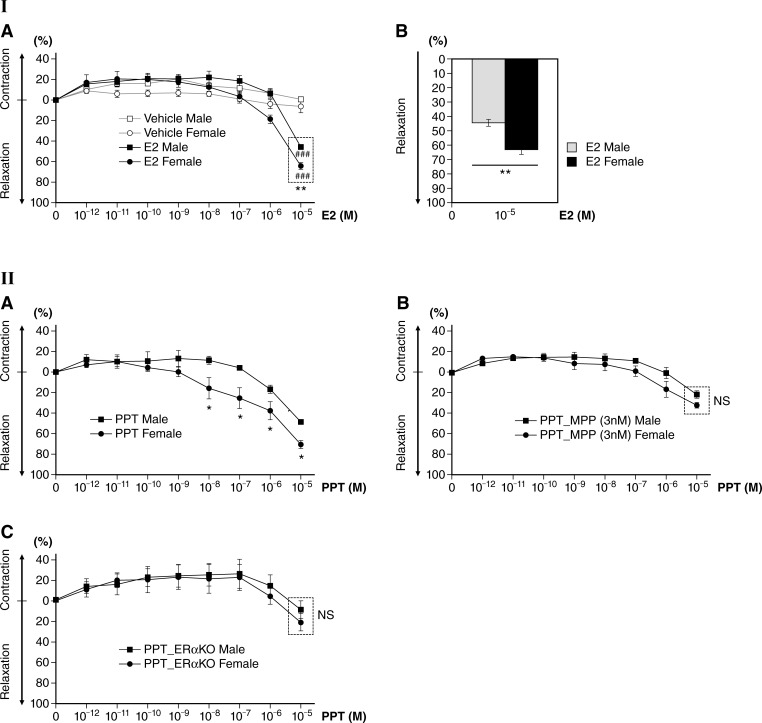Fig. 1.
Dose-dependent effect of 17β-estradiol (E2) on male and female mouse aortic relaxation. I,A: percent relaxation after E2 (10−12−10−5 M) treatment. E2 significantly increased vessel relaxation at 10−5 M in both male and female aortic rings compared with vehicle controls. E2-induced relaxation was greater in female aortic rings (62.95 ± 3.27%) than those of male aortic rings (44.44 ± 2.12%) at 10−5 M, showing sex differences. Vehicle controls: n = 3 for both male and female mice; E2 treatment: n = 5 for both male and female mice. ###P < 0.001, E2 treatment vs. vehicle controls of the same sex; **P < 0.01, E2-treated female vs. male mice at 10−5 M. I,B: bar graph of I,A at 10−5 M E2. Percent differences in relaxation are shown between female and male aortic rings treated with E2 at 10−5 M. **P < 0.01, E2-treated female vs. male mice (n = 5 per sex). II,A: dose-dependent effect of the estrogen receptor-α (ERα) agonist 4,4′,4″-(4-propyl-[1H]pyrazole-1,3,5-triyl)tris-phenol (PPT) on male and female mouse aortic relaxation; percent relaxation after PPT (ERα agonist, 10−12−10−5 M) treatment is shown. PPT-induced relaxation was greater in female than male aortic rings (n = 4 per sex, *P < 0.05, PPT-treated female vs. male mice at 10−8−10−5 M). II,B: dose-dependent effect of the ERα antagonist 1,3-bis(4-hydroxyphenyl)-4-methyl-5-[4-(2-piperidinylethoxy)phenol]-1H-pyrazole (MPP) on male and female mouse aortic relaxation; preincubation of aortas with the ERα antagonist MPP (3 nM) for 30 min greatly attenuated the effect of PPT-induced vessel relaxation, and there was no significant difference in vessel tension between male and female mice (n = 3 per sex in each treatment group). II,C: aortic rings from ERα knockout (KO) mice did not show vessel relaxation after PPT treatment, and there was no significant difference in vessel tension between male and female mice (n = 3 per sex). Data are expressed as means ± SE.

